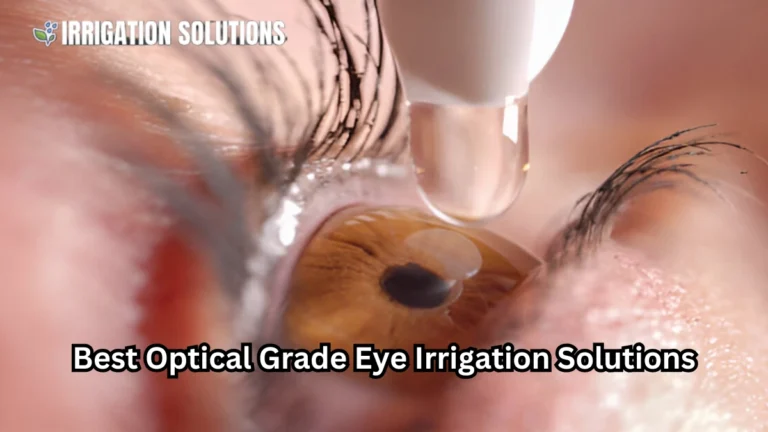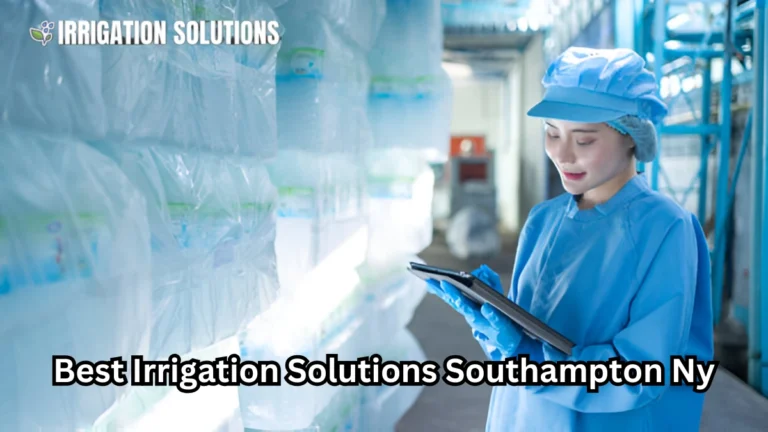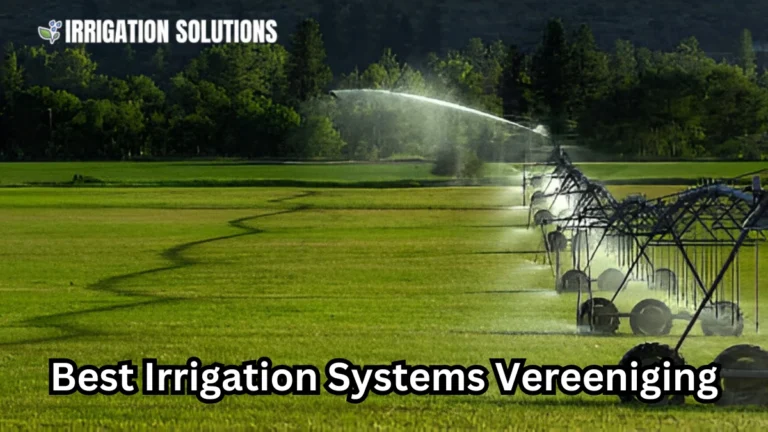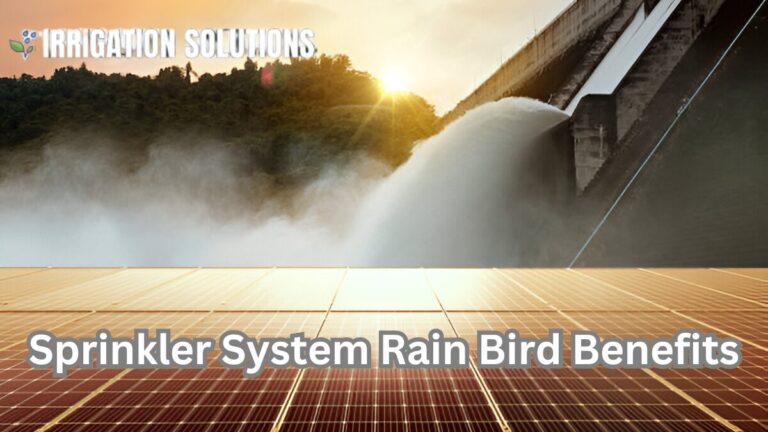best urban irrigation solutions

Urban areas face unique challenges when it comes to water management. As cities grow, the demand for water increases, and traditional irrigation systems often fall short. With the rise of urbanization and climate change, efficient irrigation solutions are becoming more important than ever. This blog post explores sustainable urban irrigation solutions, providing in depth knowledge, practical tips, and real-life case studies to help you understand how cities are tackling water scarcity and promoting green spaces.
The Importance of Efficient Urban Irrigation
Urban irrigation is a critical component of city infrastructure. It supports the growth of urban green spaces such as parks, gardens, and street trees. Efficient irrigation systems can help cities manage their water resources better, reduce water waste, and maintain aesthetically pleasing landscapes. Additionally, they play a key role in mitigating the effects of heat islands in cities by keeping green areas lush and cool.
Benefits of Sustainable Urban Irrigation
- Water Conservation: Efficient irrigation systems help reduce water consumption by delivering water directly to the root zones of plants, minimizing evaporation and runoff.
- Improved Green Spaces: With proper irrigation, urban landscapes can thrive, providing benefits such as cleaner air, better aesthetics, and enhanced well-being for residents.
- Cost Savings: Implementing water-efficient irrigation systems can lower water bills and reduce the overall cost of water management for municipalities.
- Energy Efficiency: Advanced irrigation systems can be designed to operate with minimal energy consumption, further reducing a city’s carbon footprint.
Types of Urban Irrigation Systems
When it comes to urban irrigation, several solutions are available, each catering to specific needs. Let’s break down the most popular urban irrigation systems.
Drip Irrigation
Drip irrigation is one of the most water efficient methods available. It works by delivering water directly to the roots of plants through a network of tubes and emitters.
- Pros:
- Reduces water wastage.
- Ideal for precision watering in urban gardens, green roofs, and community gardens.
- Prevents weed growth as water is delivered directly to plants.
- Cons:
- Requires regular maintenance to prevent clogging.
- Installation can be complex in large urban areas.
Sprinkler Systems
Sprinklers are commonly used in larger urban green spaces like parks, sports fields, and public gardens. They spray water across a large area, mimicking rainfall.
- Pros:
- Effective for covering large areas.
- Flexible and easy to install.
- Automated systems are available to reduce manual labor.
- Cons:
- Can lead to water wastage due to evaporation or runoff.
- Ineffective in areas with uneven terrain.
Smart Irrigation Systems
Smart irrigation systems use sensors, weather data, and algorithms to adjust watering schedules based on real-time conditions.
- Pros:
- Saves water by adjusting to environmental conditions such as rain or humidity.
- Can be controlled remotely via apps or devices.
- Reduces water waste and lowers utility bills.
- Cons:
- Higher upfront cost.
- Requires internet connectivity and technical know-how for installation.
Vertical Garden Irrigation
Vertical gardens are becoming increasingly popular in urban areas where space is limited. These gardens are typically grown on walls or other vertical surfaces and need specialized irrigation systems.
- Pros:
- Maximizes limited space in urban environments.
- Can be paired with smart irrigation systems to save water.
- Cons:
- Can be more expensive to install and maintain.
- Requires knowledge of vertical gardening and irrigation techniques.
Rainwater Harvesting Systems
Rainwater harvesting involves collecting rainwater from rooftops or other surfaces and storing it for later use in irrigation. This solution is particularly useful in regions with irregular rainfall patterns.
- Pros:
- Reduces reliance on municipal water systems.
- Can be paired with other irrigation systems to increase efficiency.
- Lowers water bills.
- Cons:
- Requires space for storage tanks.
- Dependent on seasonal rainfall.
Best Practices for Sustainable Urban Irrigation
To ensure that urban irrigation systems are sustainable, it’s important to follow certain best practices. These methods not only conserve water but also improve the overall effectiveness of irrigation systems.
Use of Native Plants
Native plants are well-suited to the local climate, meaning they require less water and maintenance. By incorporating native plants into urban landscapes, cities can reduce the overall water usage of irrigation systems.
Examples of native plants:
- In the U.S.: Bluegrass, Black eyed Susan, and Coneflower.
- In Australia: Kangaroo Paw, Bottlebrush, and Grevillea.
- In the U.K.: Lavender, Foxglove, and Heather.
Mulching
Mulch helps retain moisture in the soil, reducing the need for frequent watering. It also prevents weed growth and keeps the soil temperature consistent.
Types of mulch:
- Organic Mulch: Bark, leaves, grass clippings.
- Inorganic Mulch: Gravel, stone, and rubber mulch.
Time of Day
Watering during early morning or late evening hours reduces water evaporation. This practice ensures that more water reaches the plants’ roots rather than being lost to the air.
Efficient Watering Techniques
Adopting techniques that ensure water is delivered where it’s needed most is key to reducing water usage. Using the right pressure, avoiding overwatering, and adjusting irrigation schedules based on weather conditions all contribute to more efficient irrigation.
Case Studies in Urban Irrigation
Case Study 1: The Green City of Singapore
Singapore is known for its innovative approach to urban planning, particularly in terms of sustainability. The city state has implemented several urban irrigation systems, including a mix of smart irrigation and rainwater harvesting. The government has also created a “water loop,” which involves recycling water and using it for irrigation and other non-potable purposes.
Key statistics:
- Rainwater harvesting capacity: Singapore collects around 30% of its water needs through rainwater harvesting.
- Water efficient gardens: Singapore’s Gardens by the Bay is an example of a garden that uses efficient irrigation systems, including sensors that control the watering schedule based on weather forecasts.
Case Study 2: Los Angeles’ Smart Irrigation Project
In response to water scarcity, Los Angeles has implemented smart irrigation systems across parks and public spaces. These systems use sensors to monitor soil moisture and weather conditions, adjusting irrigation schedules in real time. As a result, the city has reduced its water usage for landscaping by up to 40%.
Key statistics:
- Water saved: Over 1 billion gallons of water have been saved annually due to the smart irrigation systems.
- Technology used: LA’s smart irrigation systems utilize weather data, sensors, and automated controllers.
Future of Urban Irrigation
The future of urban irrigation lies in integrating advanced technologies with sustainable practices. Innovations such as artificial intelligence (AI), machine learning, and Internet of Things (IoT) devices will make it possible for cities to optimize water usage and monitor irrigation systems remotely. Smart cities around the world are already investing in these technologies to create more water-efficient urban environments.
Emerging Technologies
- AI and Machine Learning: These technologies can predict water usage patterns and make real time adjustments to irrigation schedules.
- IoT Sensors: These sensors collect data on soil moisture, weather conditions, and plant health, helping cities optimize irrigation in real time.
Green Infrastructure and Water Resilience
The integration of green infrastructure, such as green roofs, rain gardens, and permeable pavements, plays a key role in managing stormwater and reducing irrigation needs. These systems not only help manage water more efficiently but also provide additional environmental benefits.
Conclusion
Urban irrigation solutions are critical to managing water resources efficiently in the face of increasing population growth and climate change. By adopting sustainable irrigation systems, cities can not only reduce water waste but also create beautiful, green spaces that improve the quality of life for residents. From drip irrigation and smart systems to rainwater harvesting and native plants, there are many ways to make urban irrigation more efficient and sustainable. By following best practices and learning from innovative case studies, cities can pave the way for a greener, more water-resilient future.
Quick Recap: Key Takeaways on Urban Irrigation Solutions
- Water Efficiency: Adopt systems like drip irrigation, smart systems, and rainwater harvesting to reduce water wastage.
- Sustainable Practices: Use native plants, mulch, and proper watering schedules for a healthier urban landscape.
- Innovative Technologies: Leverage AI, machine learning, and IoT devices to optimize irrigation and improve water management.
- Global Examples: Cities like Singapore and Los Angeles are leading the way with smart irrigation systems and green infrastructure.
By implementing these solutions, cities can take significant strides toward becoming more sustainable and water efficient.






